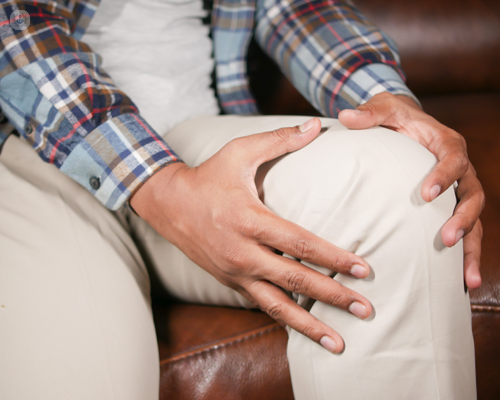ACL reconstruction/sports injuries and joint preservation strategies for patients with knee issues
Autore:Knee injuries, particularly those affecting the anterior cruciate ligament (ACL), are common among athletes and active individuals. ACL reconstruction and various joint preservation strategies play a crucial role in managing these injuries and ensuring long-term knee health. This article by leading orthopaedic knee specialist Mr James Singleton provides a comprehensive overview of ACL reconstruction and joint preservation strategies for patients with knee issues.

What is ACL reconstruction?
Understanding ACL injuries
The anterior cruciate ligament (ACL) is one of the key ligaments that stabilises the knee joint. It can be injured during activities that involve sudden stops, changes in direction, or direct impact to the knee. ACL injuries are often characterised by:
- A popping sound at the time of injury
- Severe pain and swelling
- Instability or ‘giving way’ of the knee
- Difficulty bearing weight on the affected leg
What is involved in ACL reconstruction?
ACL reconstruction is a surgical procedure for the knee that’s aimed at restoring the stability and function of the knee after an ACL tear. The procedure involves:
Preoperative assessment: A thorough examination, including physical tests and imaging studies (e.g., MRI), to confirm the ACL tear and plan the surgery.
Graft selection: Harvesting a graft from the patient's own tissue (autograft) or using a donor graft (allograft). Common graft sources include the patellar tendon, hamstring tendon or quadriceps tendon.
Surgical technique: Using arthroscopic (keyhole) surgery, the surgeon removes the damaged ACL remnants, prepares the graft, and secures it in place using tunnels drilled in the femur and tibia. The graft is fixed with screws or other fixation devices.
Rehabilitation: A structured rehabilitation programme is essential for recovery, involving physiotherapy exercises to restore strength, flexibility, and stability to the knee. Rehabilitation typically lasts several months.
What are joint preservation strategies for knee issues?
Non-surgical treatments
Non-surgical treatments can be effective in managing knee issues and preserving joint health, especially in the early stages of injury or degeneration. These include:
Physiotherapy: Exercises to strengthen the muscles around the knee, improve flexibility, and enhance stability.
Medication: Pain relievers and anti-inflammatory drugs can help to manage pain. They also assist in reducing swelling.
Injections: Corticosteroid or hyaluronic acid injections to reduce inflammation and lubricate the joint.
Bracing: Wearing a knee brace to provide support and stability during activities.
Surgical options
For patients with severe knee injuries or advanced joint degeneration, surgical interventions may be necessary. These can include:
- Meniscus repair or removal
- Meniscectomy: Removal of the damaged portion of the meniscus.
- Meniscus repair: Suturing the torn meniscus to preserve its function and improve joint stability.
Cartilage restoration
- Microfracture: Creating small holes in the bone to stimulate the growth of new cartilage.
- Autologous chondrocyte implantation (ACI): Harvesting and culturing the patient's own cartilage cells, then implanting them into the damaged area.
- Osteochondral grafting: Transplanting healthy cartilage and underlying bone from another part of the knee or a donor.
Joint preservation in sports
Athletes and active individuals can adopt various strategies to prevent knee injuries and preserve joint health:
- Proper training: Following a well-designed training programme that includes strength, flexibility, and conditioning exercises.
- Technique: Using proper techniques in sports and activities to minimise stress on the knees.
- Equipment: Wearing appropriate footwear and using protective gear to support the knees.
- Rest and recovery: Allowing adequate time for rest and recovery between intense training sessions and competitions.
Understanding the various treatment options and adopting preventive measures can help patients and athletes maintain an active lifestyle and minimise the risk of further knee issues. Consult with a qualified healthcare professional to determine the most appropriate treatment plan for your specific knee condition.
If you require expert assistance regarding a knee injury affecting the ACL, arrange a consultation with Mr Singleton via his Top Doctors profile.


